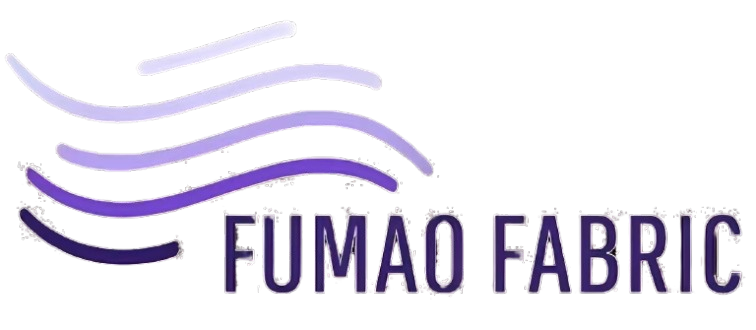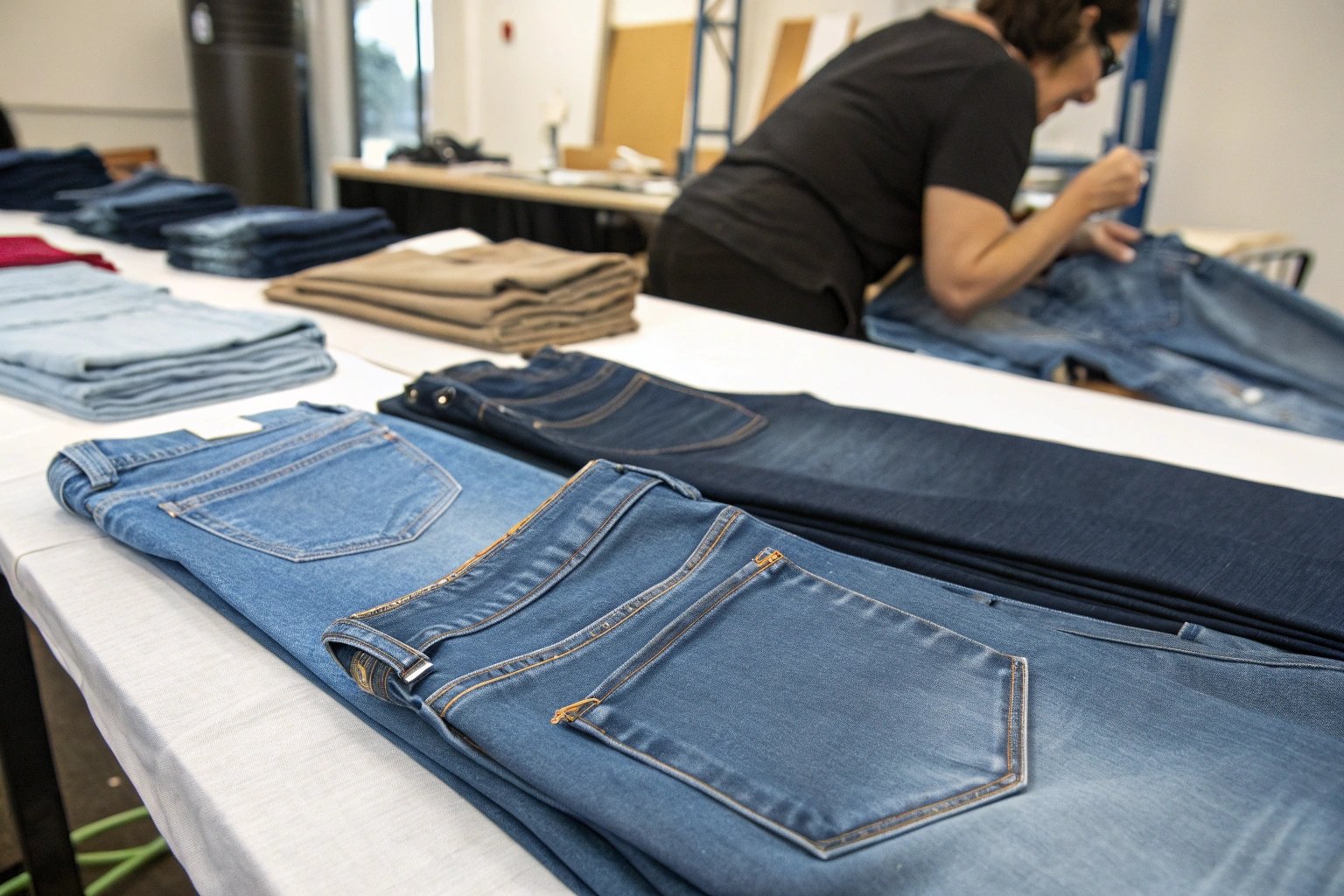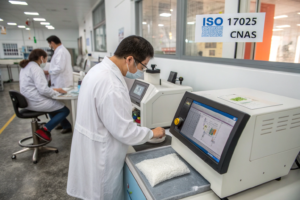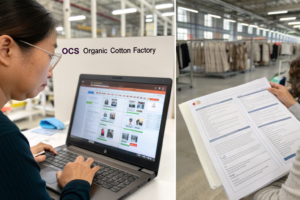Denim has come a long way from the stiff, rugged workwear of the past. Today’s denim buyers, especially in the fashion and activewear sectors, want more than durability—they want stretch, softness, and day-long comfort. As a textile manufacturer, I’ve worked with clients from fast fashion to premium brands who all ask the same thing: What’s the most comfortable stretch denim you can offer?
The best stretch denim fabrics for comfort blend cotton with elastane, T400, modal, or lyocell to achieve softness, resilience, and body-contouring elasticity—ideal for everyday wear, performance use, and fashion-forward silhouettes.
At Fumao Fabric, our clients across the US and Europe often request stretch denim that balances recovery and softness. Whether for skinny jeans, jeggings, or relaxed fits, the right stretch composition can define the entire product experience.
Which Denim Blends Offer the Most Natural Feel?
Stretch denim comfort begins with the base fiber. While synthetics bring stretch, nothing beats the natural feel of cotton.
Cotton-spandex and cotton-modal blends are among the most comfortable stretch denim types, offering softness and breathability with just the right amount of stretch.
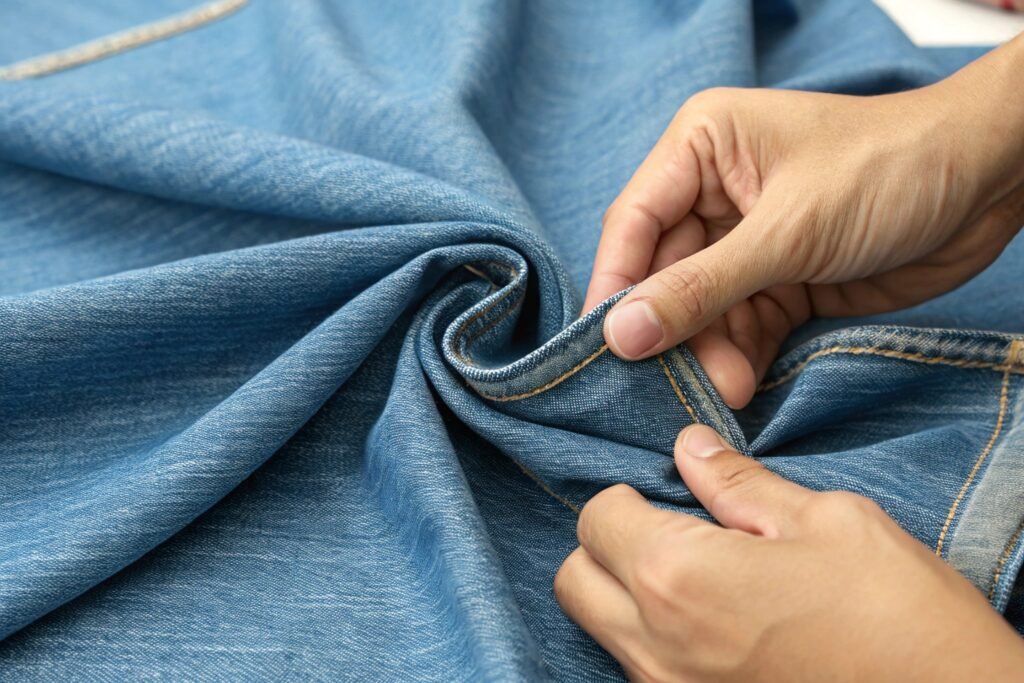
Why is cotton-spandex denim still the standard?
Cotton (about 92–98%) blended with 2–8% spandex offers a balanced feel. It allows jeans to move with the body while keeping breathability and a traditional denim look. Spandex ensures recovery so that jeans don’t sag after hours of wear. This classic blend remains a favorite among denim mills and global brands for its reliability.
What does modal bring to the table?
Modal is a regenerated cellulose fiber from beech trees. When blended with cotton and spandex, it enhances moisture absorption, smooth texture, and drape. It’s ideal for premium stretch denim used in summer collections or soft-to-touch women's wear. Our modal-cotton-spandex blends are especially popular in Europe for their luxurious handfeel and lighter weight.
How Do High-Tech Yarns Improve Stretch Recovery?
Advanced yarn tech transforms how stretch denim performs. Instead of basic elastane, new yarns help jeans keep their shape wear after wear.
Dual-core and T400 polyester yarns improve recovery, stretch stability, and comfort retention in stretch denim fabrics.

What is dual-core stretch denim?
Dual-core yarns wrap spandex and polyester in cotton. This gives stretch, softness, and resilience in one structure. Compared to simple spandex denim, dual-core versions reduce knee bagging and deformation after repeated use. Levi’s Sculpt line incorporates this to maintain silhouette through active movement.
How does T400 fiber enhance comfort?
T400 is a bicomponent yarn with natural stretch. Unlike spandex, it doesn't degrade as fast, making it ideal for jeans meant to last. T400-blended denim feels smoother and offers multidirectional stretch—perfect for daily wear or travel pants. It’s a favorite for athleisure crossover jeans in our U.S. buyers’ catalogs.
What Lightweight Stretch Denim Options Are Best for Summer?
In hot climates or summer fashion drops, lightweight stretch denim matters. Thick fabrics cause discomfort, while thinner denims with stretch offer freedom.
Stretch denim with lyocell, rayon, or lightweight cotton blends provides breathable comfort for warm-weather wear without sacrificing structure.
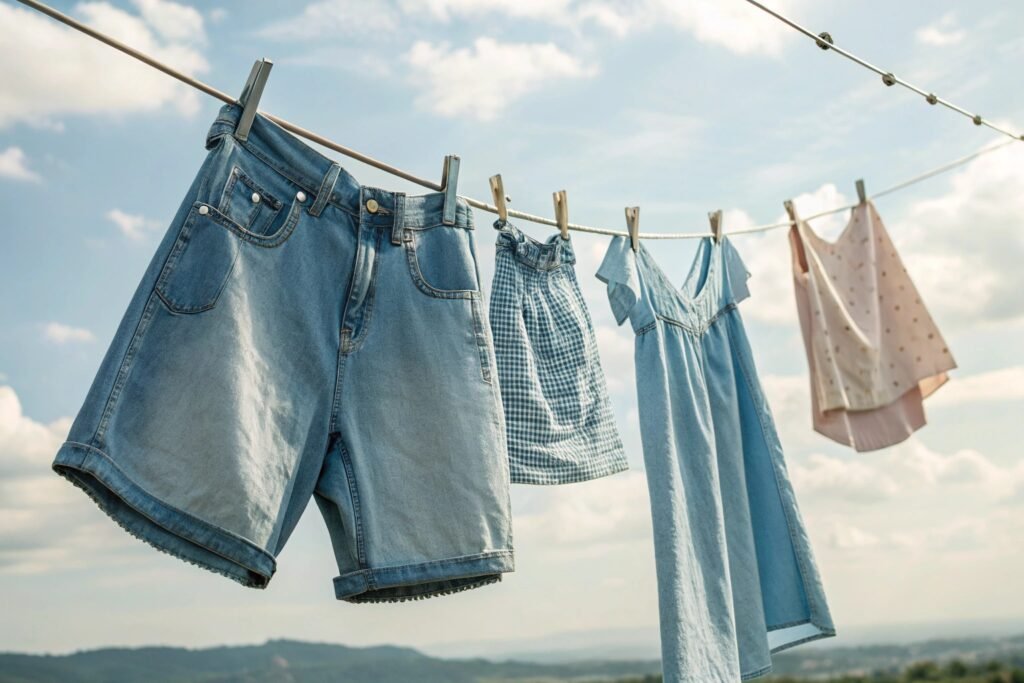
Is lyocell-based denim better for breathability?
Lyocell (often branded as TENCEL™) is cool, smooth, and moisture-wicking. When added to cotton and elastane, it transforms denim into a softer, cooler fabric. This makes it perfect for hot-weather jeans, dresses, or even office casuals. We’ve helped U.S. brands upgrade basic skinny jeans to TENCEL-enhanced versions for summer 2025 launches.
What about rayon or viscose stretch blends?
Rayon adds drape and sheen, especially in women's or kid’s fashion. It pairs well with cotton and elastane for creating fluid, soft-feel stretch denim. Some eco-rayon blends offer a lower-impact footprint as well, which is becoming a strong selling point for sustainable brands.
How Can Buyers Ensure Stretch Denim Comfort at Scale?
Not all stretch denims are created equal. Two fabrics with the same content may perform differently in the real world. That’s why testing and control are critical.
Buyers should look for certified fabric tests, verified composition, and visual recovery checks to ensure long-term stretch denim comfort.
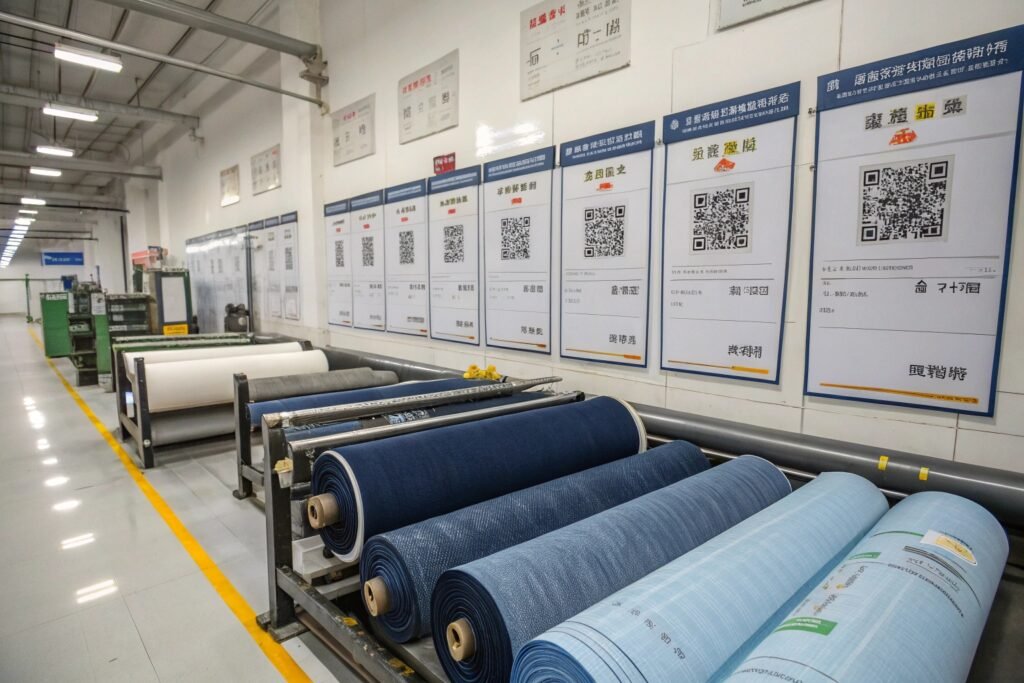
What tests validate stretch and comfort?
We run tests on stretch percentage (minimum 25–35% recommended), recovery rate (above 85%), and abrasion resistance. Lab equipment stretches denim to simulate wear cycles. Our CNAS lab reports are logged on blockchain for transparent sharing. Buyers in North America especially value having these results before sample approval.
How does QR tracking help with quality assurance?
Every batch at Fumao receives a fabric-specific QR code. This links to composition, shrinkage rate, colorfastness, and test results. Brands can check whether the stretch denim passed all tests before confirming production. This digital traceability reassures sourcing teams and improves post-sale confidence.
Conclusion
Comfortable stretch denim is more than a fabric—it’s a science and a promise. Whether you’re sourcing skinny jeans for youth fashion or stretchy mom jeans for the U.S. mass market, choosing the right blend, yarn tech, and testing process can make or break your line. At Fumao Fabric, we help you craft comfort into every stitch, ensuring the stretch is felt—not just claimed.
